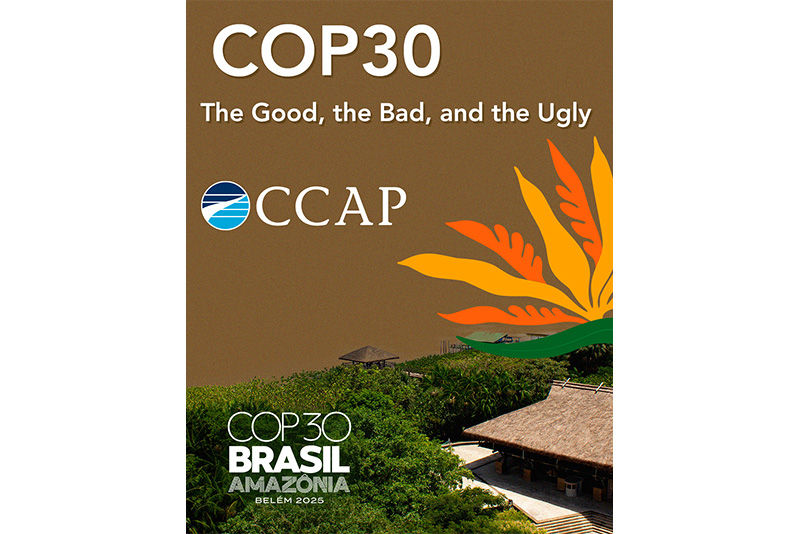NAMAs: Opportunity Knocking
- Ned Helme
- Nov 21, 2012
- 4 min read
In a series of “Policy Insights” Ned Helme will discuss practical climate change solutions that are emerging from CCAP’s extensive on-the-ground work in developing countries and internationally. Initially focusing on the effective implementation of nationally appropriate mitigation actions (NAMAs) by developing countries, future briefings will explore the details associated.
The global community faces two possible climate change pathways toward 2020. The first delays meaningful on-the-ground action and places needed stabilization scenarios virtually out of reach. The second focuses international investment resources to enable low carbon development policies and actions in the near-term, improving quality of life while avoiding the worst climate change impacts. The second pathway requires sustained policy change in key sectors supported by significant levels of public and private investment, technology transfer and capacity building. NAMAs could drive this transformation in developing countries – if we seize the opportunity.
The Clean Development Mechanism (CDM) and new market mechanisms won’t deliver what we need before 2020. This is because of:
Low investment. CDM investment depends on offset demand from developed nations and their regulated entities. The current level of developed country mitigation targets is far exceeded by the supply of CDM and domestic reductions already in the pipeline, resulting in a dramatic decline in CDM credit prices. Hence, the demand thru 2020 for CDM projects will not deliver transformational investment.
Limited policy reach. CDM projects change behavior at the margin, not sector-wide. CDM programs of activities (PoA) have a greater potential reach but are at an early stage. When driven solely by private-sector least cost mitigation goals and disconnected from broader government policy, the CDM cannot deliver sectoral transformation.
Profit-driven constraints. Market mechanisms emphasize short-term least-cost GHG mitigation, not the GHG mitigation with the greatest global return on investment in the long term.
Changing buyer interests. While the CDM will continue to play a role for some countries, Europe and other key buyers are turning toward new broader market mechanisms for most developing countries, and these will take time to design and implement.
NAMAs hold the key to transformation now because they offer:
A new playing field. The emergence of developing country NAMAs from the 2010 Cancun Agreements can change not only the rules of the game for mitigation investment but also the proverbial lay of the land. NAMAs move beyond producing offsets for developed countries to enable developing countries to retain at home the GHG benefits as well as the broader sustainable development benefits of their lower-cost mitigation opportunities (“low-hanging fruit”). The scale of mitigation investment that could be leveraged by sectoral NAMAs far exceeds what is possible under the CDM. NAMAs are designed to attract a much larger pool of private sector capital interested in investing in the underlying assets like renewable energy facilities rather than solely CDM credits associated with such investments.
Alignment with immediate development needs. NAMAs link government policy with mitigation action, empowering governments to align NAMA investment, technology transfer and capacity building with their specific development objectives. NAMAs allow developing countries to design policies that optimize both sustainable development goals and mitigation goals, increasing their appeal to both domestic leaders and stakeholders.
Full recognition of investment value. Because NAMA finance is aimed at catalysing private sector investment in the underlying projects that will achieve the policy goals, it is not limited by a sole focus on short term profits from carbon offsets. NAMAs seek to help overcome domestic policy barriers and make investment in low carbon development pathways financially attractive and affordable for the private sector both within the developing country and internationally.
No wait. The broad approach to defining NAMAs under the UNFCCC opens the door to immediate implementation and innovation by both implementing and contributing countries. Because NAMAs are not designed initially to produce tradable offsets, the policy architecture and requirements for NAMA measurement, reporting and verification (MRV) could prove less burdensome and more flexible than those under the CDM. Bilateral negotiation of NAMA finance terms should be far more efficient for driving mitigation pre-2020 than the multilateral negotiation and implementation of new market mechanisms.
What will it take to make NAMAs work?
Tailored approaches. NAMAs must meet the specific sustainable development needs of individual countries and produce multiple benefits beyond mitigation. One size will not fit all and development benefits will be the key drivers of success.
Leveraging private-sector resources. NAMA investment must be targeted strategically to leverage private-sector engagement, investment and innovation and enable mitigation initiatives to become self-sustaining over time.
Effective MRV. MRV requirements will need to provide adequate assurance to both implementing and contributing countries regarding the effectiveness of NAMA finance in achieving both actual mitigation and the development, health and quality of life goals of these policies.
Institutional capability. Implementing countries must build the institutional capability to design policies that transform their societies to a lower carbon development path, attract NAMA finance from potential contributing governments, coordinate NAMA finance with policy transformation across agencies, engage successfully with the private sector, and deliver the promised results.
As CCAP continues to explore the NAMA framework both on the ground and within the international negotiations, future “Policy Insights” will explore these challenges.




This discussion on NAMAs highlights the crucial link between sustainable development and climate action—it's a reminder of how interconnected our choices are. It’s a bit like the insights I gained from the rice purity test; sometimes, understanding the bigger picture can lead to surprising revelations!
PolyTrack is more than just a racing game; forget about boring tracks. In this creative and thrilling combination, you can design your own unique tracks and test your speed on them—no limits, just fun and surprises.